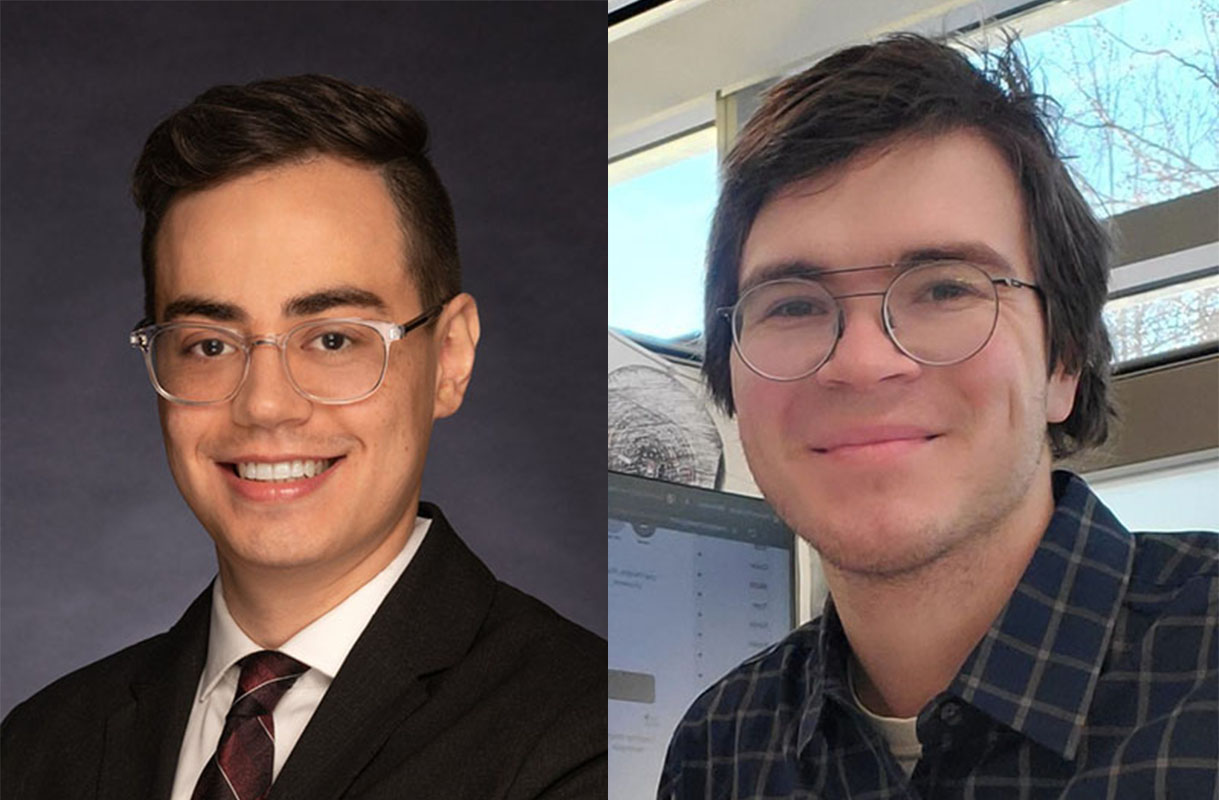 Graduate students Jason Echevarria (left) and Michael Bonthron recently published applied mathematics theses connecting abstract theory and real-life application.
Graduate students Jason Echevarria (left) and Michael Bonthron recently published applied mathematics theses connecting abstract theory and real-life application. Any mathematician will tell you math is everywhere. Applied mathematics graduate students Michael Bonthron and Jason Echevarria have proven that, as they recently published two theses that bridge the valley between abstract theory and real-life application.
“The purpose of applied mathematics is to use mathematical methods to ask questions and solve real life problems,” says Ilie Ugarcovici, a professor of mathematics and director of DePaul's applied mathematics graduate program. “These students have developed insights to help develop better techniques for numerical methods.”
Bonthtron’s thesis, “Analyzing the domain of convergence for Broyden’s method of solving nonlinear systems of equations,” builds on the well-known framework that "practice makes perfect." Nonlinear systems help predict a lot of things in our daily lives, such as problems in
population growth, economics, chemical reactions and physiology of nerves. Researchers are able to analyze outcomes and use an incremental pattern to predict the next step.
Bonthron investigated the relevance of an initial guess when solving systems of equations using numerical methods.
“Many of these methods require a carefully chosen initial estimate for the algorithm to align with the expected solution,” Bontrhon’s work notes. “This is similar to how a good estimate for an automobile purchase price is helpful in the determination of a monthly loan payment when the period and interest rate are known.”
Understanding the size and geometric structure of the set of initial guesses can help select the most efficient numerical algorithm for that particular problem.
Bonthron's finding suggests organizations can use sequential information to make better estimations and improve systems, which is particularly important for developing technology in areas like communications, logistics, finance, robotics, AI and engineering.
With the thesis, “Opinion profile dynamics with uniform bounded confidence: analysis and simulations,” Echevarria quantified the concept of opinion and calculated the probability of various scenarios. His works explains how knowing the probability of a respondent’s opinion before issuing a survey could improve reliability.
An opinion profile can describe a set of individuals, groups or entities. Groups and sets are common mathematical concepts. However, expanding these concepts to organizing groups by opinion allows for multiple opinions in a group, as well as overlap with other groups.
Tracking these associations can be daunting. Echevarria's work has made life easier for professionals such as political pollsters, marketing gurus and activists. Echevarria developed a model allowing him to mathematically describe how the profiles that form groups polarize, fragment or reach consensus.
Kurtis Todd is the senior executive assistant and director of communications in the College of Science and Health and an adjunct faculty member in the School of Continuing and Professional Studies.